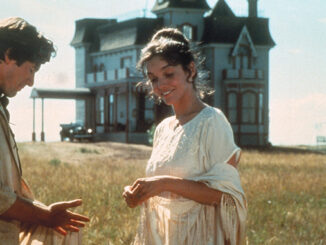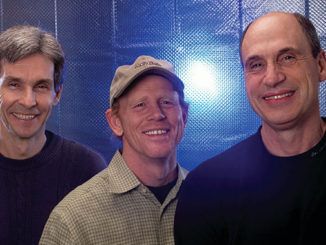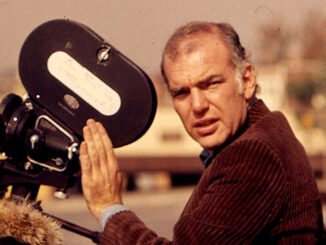
by Michael Goldman • portraits by Martin Cohen

Director Michael Tiddes’ new improvisational comedy, Sextuplets, in which Marlon Wayans portrays seven — not six — different characters, exemplifies a couple of evolving industry trends. First, the movie, which debuts on Netflix in mid-August, is illustrative of the high-end production values and resources being poured into original feature films that reach audiences exclusively across streaming platforms these days. And second, the editorial workflow on the project was thoroughly intertwined with the visual effects workflow due to the nature of the material.
The movie tells the tale of a young man (Wayans) about to be a father who discovers shortly before his wedding that he was adopted from a brood of sextuplets. He sets out to find his siblings, ends up on a wacky road trip and learns a little something about the meaning of family along the way. The movie comes from the same creative team that produced Wayans’ last two comedy features: Naked (2017) and Fifty Shades of Black (2016), both cut by Sextuplets editor Lawrence Jordan, ACE. However, Sextuplets is a lot more ambitious and technically complex, with approximately 1,000 visual effects shots. Filmed in Atlanta for about 10 weeks, it was cut by Jordan and his team from 200 hours of original source material. Post-production in Los Angeles took about nine months.
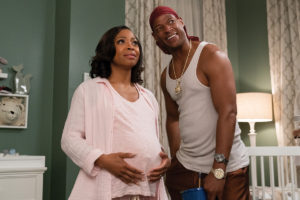
“This was a huge volume of footage, making it one of the most challenging projects of my career,” Jordan says. “They shot nearly 200 hours of dailies, much of it being improv. So everything had to be script-synched and catalogued with markers and comments, just so I could find material in a reasonable amount of time.”
In LA, the editorial team worked on five Avid Media Composer (v.8.9.4) workstations, cut the movie in the DNX 115 format, shared a server with visual effects, and relied on Nexis storage, including nightly backup via a ChronoSync system to a 20-terabyte hard drive. They also upgraded their in-house screening room projector to 4K for the project to allow them to review complex visual effects at their editorial offices.
Meanwhile, visual effects editor Jose Luis Marra emphasizes that there were often exceptionally long takes shot by DP Don Burgess, ASC, using the RED Monstro 8K digital camera system, reduced in the finish to 5K and delivered in 4K.
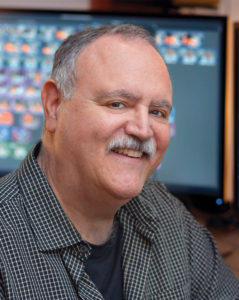
“There were often 30-minute takes — literally, they would start the camera and keep going until they ran out of storage on the card,” Marra explains. “So it wasn’t like Larry could just go from one take to another all the time. Sometimes, he had to be able to find the nuances and remember jokes from different takes. That was a huge challenge.”

The complication of Wayans playing seven characters (all six siblings, plus their mother) meant that Jordan’s team had to innovate to keep track of every improvised take, and portions of takes, so they could efficiently find proper reactions by Wayans playing opposite himself to match sequences together. First assistant Richard Saulnier explains that Marra devised “a cool system of color-coding clips for each character [with his own designated color] so that we could tell what was Marlon as one character versus Marlon as another character — versus Marlon’s double in the same clothing. We had to separate all characters, as well as doubles, because we couldn’t use any of their off-camera dialogue.”
Hello, Technodolly
A major aspect of the work was the fact that the filmmakers used a Technodolly from Pacific Motion Control to capture motion-control shots of Wayans improvising as different characters on set. One of the benefits of this approach was that editorial and visual effects could more efficiently stitch disparate elements of multiple characters from different takes together, according to Jordan.
“We could put Marlon as up to seven different characters in the same shot,” says the editor. “Unlike earlier films that have had the same person playing multiple characters, the director utilized the Technodolly [for motion-control work] to make it as dynamic as possible.”
It also made the editorial process “more detailed than I’ve ever experienced,” Jordan attests. “Because on this show, we might have wide shots where there are seven characters, and we are creating all the dailies, all the possibilities, switching out a line or a take of one person, but not the other. And then you multiply that by seven, and you have a frightening number of different possibilities for the shot.
“The timing for the ensemble is created in editorial,” he continues. “If the camera is locked off at a certain point, and we have seven characters in the scene — like we do at the end of the movie — you can be rolling a character forward and backward to get a reaction at a certain place in time. That’s what made it painstakingly detailed, more than usual, but it also gives you a lot of control.”
Jordan credits Marra with developing the methodology for tracking material coming out of the motion-control or visual effects processes. “One of the things that Jose set up was the use of group clips to be able to access all takes of a character in a motion-control or static shot,” explains the editor. “He would group a clip with multiple performances of Marlon as each character. I would throw those groups into the source monitor, and then the director and I could see everything we had that could possibly work together. It was a way of utilizing grouping in our particular situation, and it was tremendously helpful.”
Marra elaborates: “For regular takes, we would put in the markers and type in the line. For motion-control groups, they are saying different things at the same time in different takes. So we grabbed the markers and would put in pink a [character’s name] and the line, but we also had to put what take it was. That let Larry sort it by timecode and see what everyone said in chronological order. Or he could sort by color, and see everything the character said on a particular take. That was a simple tool we adapted to our needs. The Avid isn’t really designed for this, but we made it work that way.”
Given the improvisational nature of the story and Wayans’ preferred way of working, the movie involved a huge amount of laborious script-sync work, which is where assistants played crucial roles. Atlanta-based second assistants Sara Bennett and Jenny Lindamood handled a large chunk of that chore, along with marking up dailies and labeling all markers with first lines of dialogue and comments.
“We shot digital, and by the next morning, we would be getting dailies in the Avid,” Marra says. “Right away, Jenny would check the dailies and start tagging the start and stop of a take. With digital, the camera would sometimes not stop rolling. So you have to take out [portions of takes] where everyone is just going around changing things or babbling, so that Larry doesn’t waste time watching that. We decided to put markers on the take at the start of every spoken line.
“At the same time, Sara would start doing the scripting and had to type in all the ad libs, and mark them as such,” he continues. “It all had to be script-synched verbatim. Sarah did a fantastic job with that, and [LA-based second assistant] Diana Santana did likewise with the additional photography. That really sped us up, because when you are looking for stuff through 10 takes, and gobs of improvising, without such a system you might never finish the film.”
Everyone on the post team emphasizes the collaborative nature of the work and the need for each to understand and participate in the visual effects workflow. Indeed, Marra initially served as first assistant in Atlanta before moving up to visual effects editor, while Saulnier took over as first assistant editor during the director’s cut, but then left the show. Rolf Fleischmann joined the show as first assistant to oversee turnovers to sound, music, DI and final delivery to Netflix.
Part of the work they did, along with visual effects assistant Michelle Gold, repeatedly walked a line between editorial and visual effects, as particular tasks were largely handled in the editorial room. Working closely with visual effects supervisor Bryan Jones, who oversaw several facilities that worked on the movie, the team templated particular CG effects, built certain effects themselves and erased or fixed prosthetic flaws.
“The template of all the visual effects was certainly created in editorial,” confides Jordan. “I could not have done this film without someone like Jose, who knows both visual effects and editorial. Much of what he did would not have been time-efficient or workflow-efficient to send out to a visual effects house. We needed to create these effects rapidly, as soon as the director asked for them.”

Beware of Baby Pete
One of the most challenging visual effects in the extended sequences cut by Jordan is the portrayal of the Baby Pete character. He is the youngest sibling, with a diminutive body that can’t possibly belong to the real Marlon Wayans, though the character clearly has Wayans’ head and face. Cutting segments together featuring Baby Pete, and trying to find the correct body parts to fit together, was an adventure for the entire editorial team.
“We had takes where Marlon was on the bed acting out the lines, and then we had the same angles, but with a body double listening to the lines and moving his body accordingly,” Marra explains. “Larry would cut the scene using just the layer with Marlon, and I would go back and find the right pieces of body performance to fit Marlon’s lines. It is amazing how much you can change a whole take by just switching the body. Hand gestures can tell more of the story than I would have guessed.”
One aspect of Jordan’s typical methodology that evolved during the project was his move up to using two 32-inch HP 2K monitors, due to the volume of visual effects material he had to sort through. He says he went through a “monitor journey” during the course of the editorial process on this movie as he grappled with the best way to deal with layers of material on the Avid timeline.
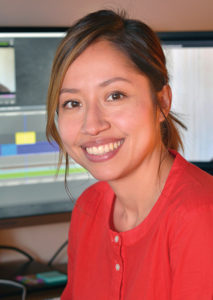
“I had vertical monitors, I had ultra-wide monitors, and finally ended up with two giant 32-inch monitors,” the editor explains. “I don’t typically like to work with a lot of tracks when working with the director, because I want to execute our ideas as quickly as possible. But on this show, I was required to work with loads of tracks; the bigger monitors helped me manage that challenge.”
Santana emphasizes that, to a large degree, everybody in editorial dived into some aspect of the visual effects workflow. “I was in charge of updating lineups for every visual effects shot,” she says. “Jose would add all updated temp effects shots to a bin for me, and I would create lineups with information the visual effects post coordinator needed to send over to vendors for them to create the master shot. This was a constant task that I had to perform throughout the day, and then we hired Michelle Gold to help with it, as well. I was also helping out with de-composing temp shots and sending out plates to the visual effects team.”
Fleischmann agrees with Santana, pointing out that, on a project like this, it is incumbent on all assistants to do whatever they can to keep the project flowing efficiently. “We had one visual effects editor, and he was very busy,” he explains. “I’ve done quite a bit of effects editing myself, so I just tried my best to help him. There are as many visual effects shots in this movie as in many science-fiction films, after all. I tried to take on as many responsibilities as the editor would surrender that wouldn’t compromise my job.”
A Sextet of Themes

Music also plays a key role in Sextuplets. The movie features a rich soundtrack thematically tied to the story content and nature of the characters. Music editor Andrew Silver explains that, like the visuals, a complex, wide range of elements were required to build the music track.
“I usually present anywhere from three to five choices of temp music for a given scene, which means I’m actually temping the entire film at least three times,” Silver explains. “But I don’t look at it that way, because what I’m doing is working through the film scene by scene, finding different approaches that work within the frame of the story and the characters. As the work progresses, and the director begins to favor certain cues, it becomes my guide to what he feels works for the film. In that way, the temping process can get easier.
“However, I’ll continue to find more ways to temp a scene, because I don’t stop just when I’ve found a cue that works,” he adds. “I always try to find cues that surprise me and work in ways that are completely unexpected. After I watch the film for the first time, I make a list of scores to draw from. There can be 40-50 scores on there, but it’s just a starting point so that when I start to work on a scene, I scan the list to see if there is one score to start with. That list morphs and changes over time.”
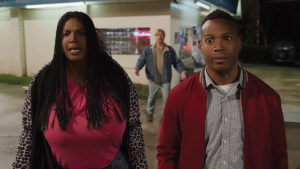
Silver tracks all cues in the picture using the scoring database tool Cue Chronicle. “During writing, the composer sends demos, which I cut in, mix against picture and present to the director,” he says. “Then, I type up his notes in Cue Chronicle and, after the playback session, I send the notes to the composer.”
One of the key aspects of his job on Sextuplets was to find what he calls “themes or motifs” for each of the characters played by Wayans. The lead character, Alan, for example, “is grounded, so his theme is warm and relatable,” says Silver. His brother Russell is an introvert, possibly on the autism spectrum, “so his theme is a bit off-kilter.”
The character Ethan is what Silver calls “an updated version of a 1970s pimp with a heart, so his theme has ’70s wah-wah electric guitar with drums and bass. And then, the sister character, Dawn — her theme was more of a motif. At least initially, she is meant to be a bit dangerous, so we felt her theme should be like a Dr. Dre song. And then, Baby Pete is a manipulator, so I had to find cues that were weird and felt like things were closing in on Alan as he talked to him.”
Reflecting back on the challenges of putting Sextuplets together, Jordan emphasizes that the project exemplifies the need for editorial to learn how to maximize visual effects to a story’s benefit. “You have to be able to embrace different tools,” he concludes. “For us, visual effects are becoming second nature at this point. It’s a tool we can utilize in so many crazy ways to help tell the story. I don’t even look at it as something new; I look at it like I’m cutting a traditional scene: What are our story concerns, and what methods can we use to address them?”



